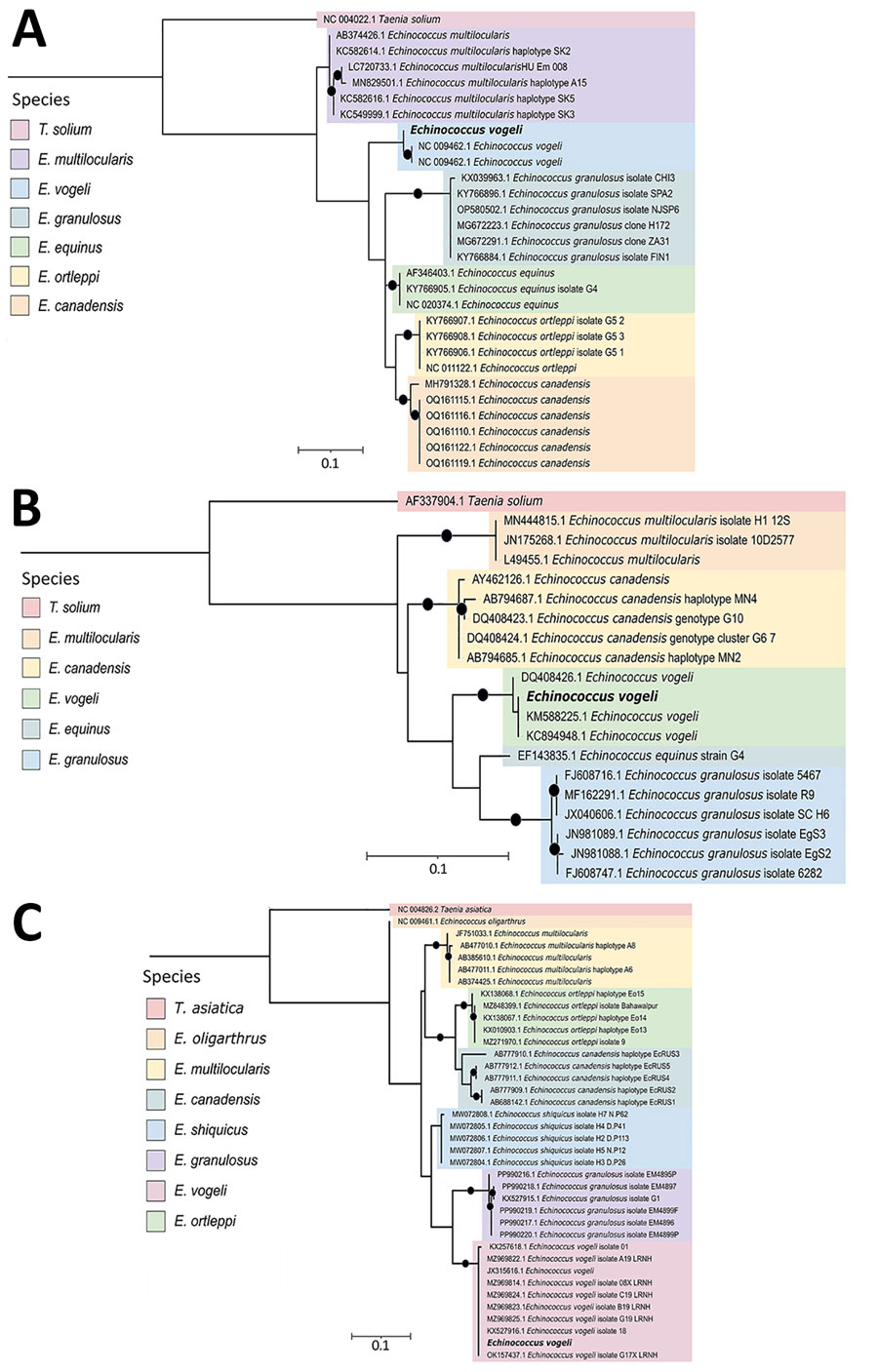Molecular Characterization of Echinococcus vogeli from Human Case, Colombia, 2024
Jorge Alfredo Morcillo Muñoz, Diego Andrés Rodríguez-Lugo, Javier Hernández Moreno, María Helena Astorquiza, Luz Helena Patiño, Tatiana Marcela Cáceres, Angie Lorena Ramírez, Juan David Ramírez, and Álvaro A. Faccini-Martínez

Author affiliation: Universidad Nacional de Colombia, Bogotá, Colombia (J.A. Morcillo Muñoz, D.A. Rodríguez-Lugo); Hospital Militar Central, Bogotá (J. Hernández Moreno, M.H. Astorquiza, Á.A. Faccini-Martínez); Universidad del Rosario, Bogotá (L.H. Patiño, T.M. Cáceres, A.L. Ramírez, J.D. Ramírez); University of South Florida, Tampa, Florida, USA (J.D. Ramírez); Universidad Militar Nueva Granada, Bogotá (Á.A. Faccini-Martínez)
Main Article
Figure 2

Figure 2. Phylogenetic reconstruction of the cytochrome b (A), 12S rRNA (B) and cytochrome c oxidase subunit 1 (C) genes of the Taeniidae family from consensus sequences obtained in study of Echinococcus vogeli infection in a human, Colombia, 2024. Bold text indicates strains from this study. Black dots indicate node support for bootstrap values >80. We used a maximum-likelihood approach to construct phylogenetic trees using IQ-TREE multicore version 1.6.12 (https://iqtree.github.io/release/v1.6.12). The best-fitting nucleotide substitution model for each gene was automatically selected by the software, and default parameters were applied. GenBank accession numbers are provided for reference sequences. Scale bar indicates substitutions per site.
Main Article
Page created: July 02, 2025
Page updated: July 22, 2025
Page reviewed: July 22, 2025
The conclusions, findings, and opinions expressed by authors contributing to this journal do not necessarily reflect the official position of the U.S. Department of Health and Human Services, the Public Health Service, the Centers for Disease Control and Prevention, or the authors' affiliated institutions. Use of trade names is for identification only and does not imply endorsement by any of the groups named above.
